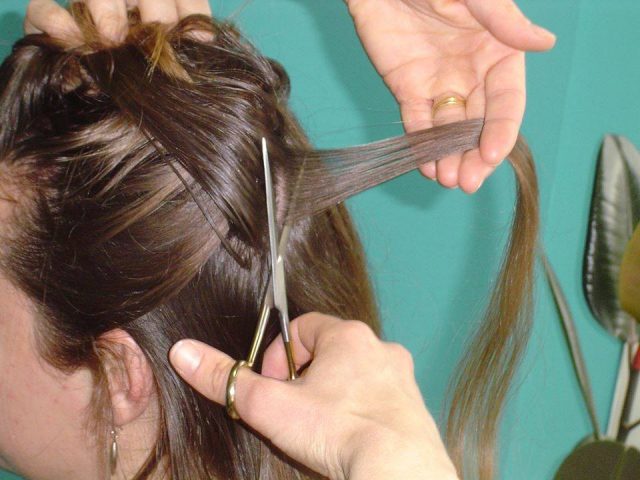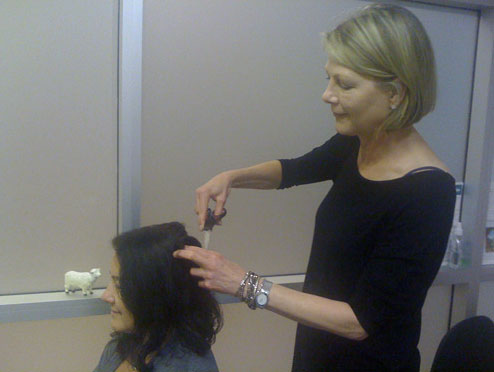What is Hair Analysis?
Hair analysis is a pathology test which analyses the mineral content of your hair. The results of the test reflect the mineral status of your body. It is a safe and non-invasive pathology test. Many doctors and natural therapists see it as one of the most valuable tests available because minerals are so important in your body. They are essential for growth, healing and wellbeing. Minerals are found in your bones and teeth, and as well they have a host of other jobs such as looking after the body’s pH and water balance, nerve activity, muscle contractions, energy production and enzyme reactions.
People are still fond of saying we should get all the minerals we need from our daily food intake. Ideally, this is still true but modern farming techniques muck around with the mineral content of foods. And if we really want to get carried away, we can also blame pollutants, food additives and stress which can play havoc with how we absorb minerals.
There are a lot of health conditions which have been identified as being aggravated by mineral imbalances and heavy metal excesses. These include: learning difficulties and hyperactivity in children, allergies and eczema, cardiovascular disease, high blood pressure and migraines.
Instead of heading to a health food shop and just buying buckets of zinc or calcium why not find out if you really need them? It’s best not to play a guessing game when it comes to taking mineral supplements. So having you hair tested to determine the mineral balance in your body is an important start on the path back to health.
Which minerals are tested for in Hair Trace Mineral Analysis (HTMA)?
Nutritional minerals
Boron Calcium Chromium Cobalt Copper Iron Magnesium Manganese Molybdenum Phosphorus PotassiumSelenium Sodium Sulfur Zinc
Toxic minerals and heavy metals
Aluminium Antimony* Arsenic Beryllium Cadmium Lead Mercury Uranium (*On request. Extra fee applies.)
Additional minerals
Barium Bismuth Germanium Lithium Nickel Platinum Rubidium Strontium Thallium Tin Titanium Tungsten aVanadium Zirconium
Sources of Toxicity
Diet, stress and exposure to heavy metals can all upset optimal mineral balances. Humans, horses and dogs can be exposed to a variety of sources of contamination in our everyday environments. Food, water, food containers, building materials (CCA treated wood, lead based paint), pesticides and land that has been exposed to industrial pollution can all offer exposure to heavy metals, as well as too high levels of nutritional elements. These minerals can build up over time and affect overall health. The hair analysis shows heavy metals.
Ten hints about how to cut the hair for hair analysis
1. Ask your hairdresser
If you are wanting to get a sample of your own hair for testing, please get a friend or hairdresser to do it. Hairdressors are know for carefully following the instructions exactly and Interclinical Laboratories says get them to take the sample. They have clean scissors. In our clinic you can ask at reception and they will sit you down and cut it for you and I’m pretty sure other clinics would help you do that too, just ask.
2. Clean scissors
Make sure the scissors are good stainless steel scissors. If you get a hairdresser to cut the hair then they can use thinning scissors for short hair. Make sure there is no sticky tape on the scissors.
3. Cutting the hair
Cut the hair as close to the scalp as you can without making the person bleed! Take small amounts from a few different places from the nape of the neck or the back of the head. If someone has long hair then you still need to cut the hair close to the scalp because you want to have the hair analysis done on recently grown hair, not hair from a year ago.
If you are cutting the hair of a horse or dog then cut the hair close to the skin, in a few small portions, and from several areas on the back of the neck. For a horse sample, cut several sections from the lower section of the mane. The area is similar for a dog, take several sections from above and below the collar, avoiding any area where topical treatments are applied. Cut hair as close to the skin as possible. Scissors should be high grade stainless steel or plastic to avoid contamination. The length should not be more than 5-6cm, retain the proximal (root) portion and discard the rest. This part reflects the most recent metabolic activity. The amount of hair necessary for analysis is half a gram, or approximately one tablespoon of hair, which should be placed in the sample collection envelope provided.
Don’t send in the ends of the hair.
4. How long should the hair be?
If you are cutting hair from someone with long hair you need to cut the hair close to the scalp. Then the hair that you are using as a sample, is the 4cm (1 and half inches) of hair that was closest to the scalp (put the excess in the compost or discard it).
If the hair is short then don’t use an electric razor for cutting the hair, because tiny pieces of metal from the blades might become mixed with the hair sample. Instead, take lots of little samples of hair from all over the head but avoid leaving the person with bald spots. 🙂
5. Medium length or long hair
Pin the hair up to show the center of the back of the head and cut the sample from under the hair about 6cms (2-3 inches) above the base of the hair line. That means you can hide the spot where the sample has been taken when you wear your hair up, or down. Also you can find the spot where you last took the sample easily when you retest later. You can cut the regrowth from the same spot.

6. Make sure the hair is clean and uncoloured
Make sure the hair has been washed without using conditioner and is well-rinsed. It is best if it isn’t treated or coloured. Don’t use hair gel, hair spray or anything like that until after the hair has been cut. If the hair has been treated or coloured, then please wait six to eight weeks before taking a sample from the freshly grown hair. Wait until the hair is dry before cutting it. We suggest that you leave a patch at the back of your head (under the ponytail area) that is uncoloured, hopefully nobody really sees that patch.
If you’ve been wearing a helmet or doing sport, please wash away the sweat before sending in the sample.
7. Special shampoos are not the friend of hair analysis
Please don’t use a special shampoo on the day of cutting the hair sample (or the last time you wash your hair before taking the hair sample). They often contain minerals which will alter the analysis eg: anti-dandruff shampoos might contain zinc or selenium which would artificially elevate the reading of those minerals.
8. How much hair?
The laboratory which does the testing needs 0.125gm of hair. This is about one teaspoon of hair. By sight, enough to cover a 20 cent coin.
9. What kind of hair?
Hair from the back of your head is used for testing. It has to be recently grown hair which has been cut close to the scalp because this hair will show recent metabolic activity. If someone is bald and head hair is not available, then you can use arm, chest, beard or pubic hair. If there is absolutely no hair available then clean fingernail clippings can be tested instead. They can be used as an alternative to head hair to test for heavy metals. However, they mightn’t always be as reliable as head hair when they are used to monitor nutrient minerals such as calcium and copper. Make sure when you are sending off the sample that you don’t mix different types of samples together such as head hair with pubic hair.
10. Use a plain envelope
Put the hair in the envelope provided, or in a clean, clearly labelled paper envelope or sachet. You probably have been provided with one by your practitioner. Do not put the hair into a plastic bag or wrap it in aluminium foil. Do not use sticky tape to attach it to a piece of paper. DO NOT PUT HAIR SAMPLES IN PLASTIC WRAP, ZIP LOCK BAGS, ALUMINUM FOIL OR TISSUE PAPER AS THIS MAY CONTAMINATE THE SAMPLE (just saying it again.)
In our clinic we use Interclinical Laboratories to order the HTMA test from.
This blog was first written in 2018 and was edited and updated in March 2023
- Filling in the Gaps: A Homeopath’s Tour of a Dental Technician Lab - 08/11/2024
- Homeopathy surge worldwide - 11/08/2024
- Autism is helped by several different styles of homeopathy - 07/05/2024





Leave a Reply